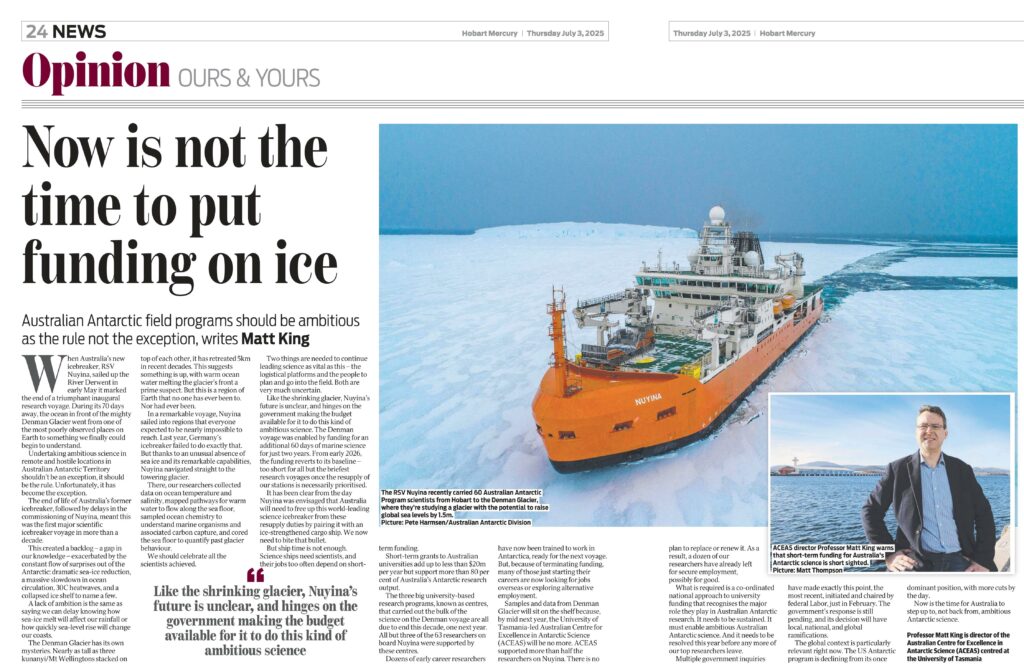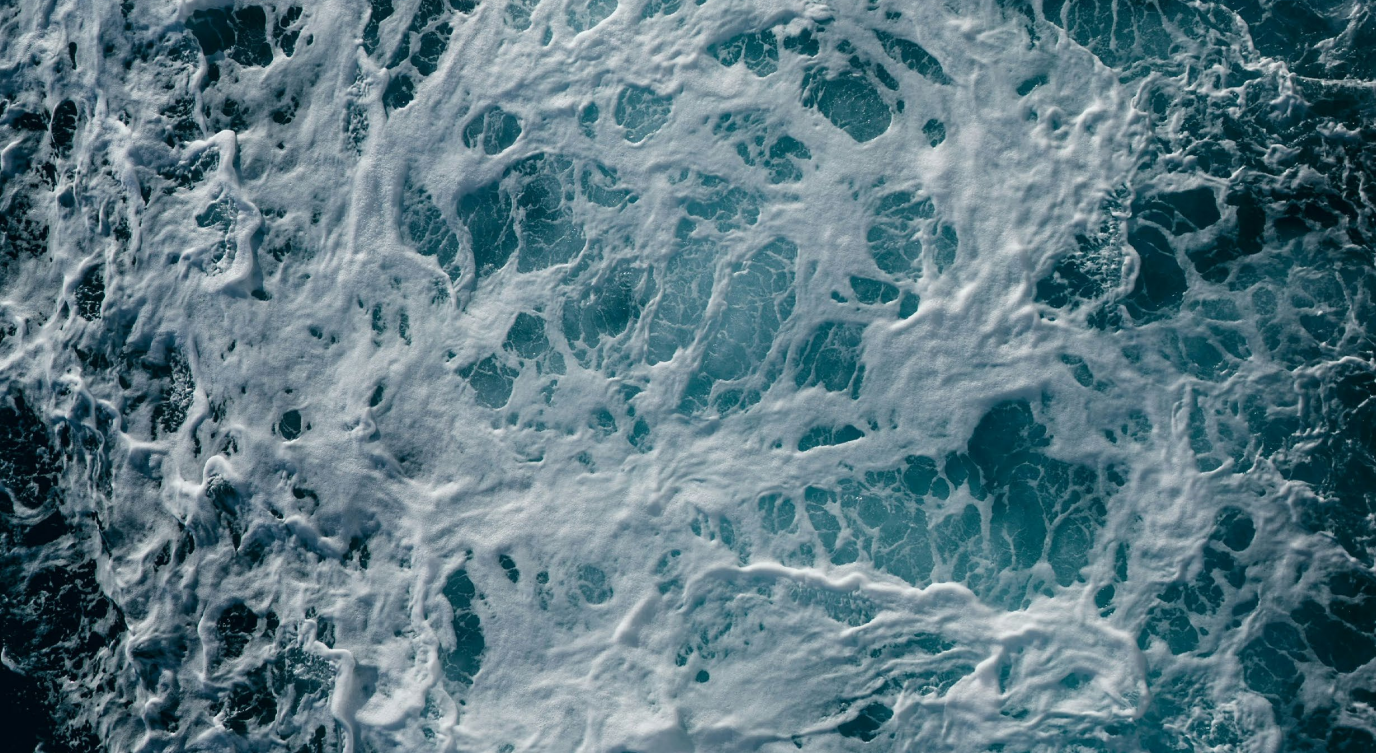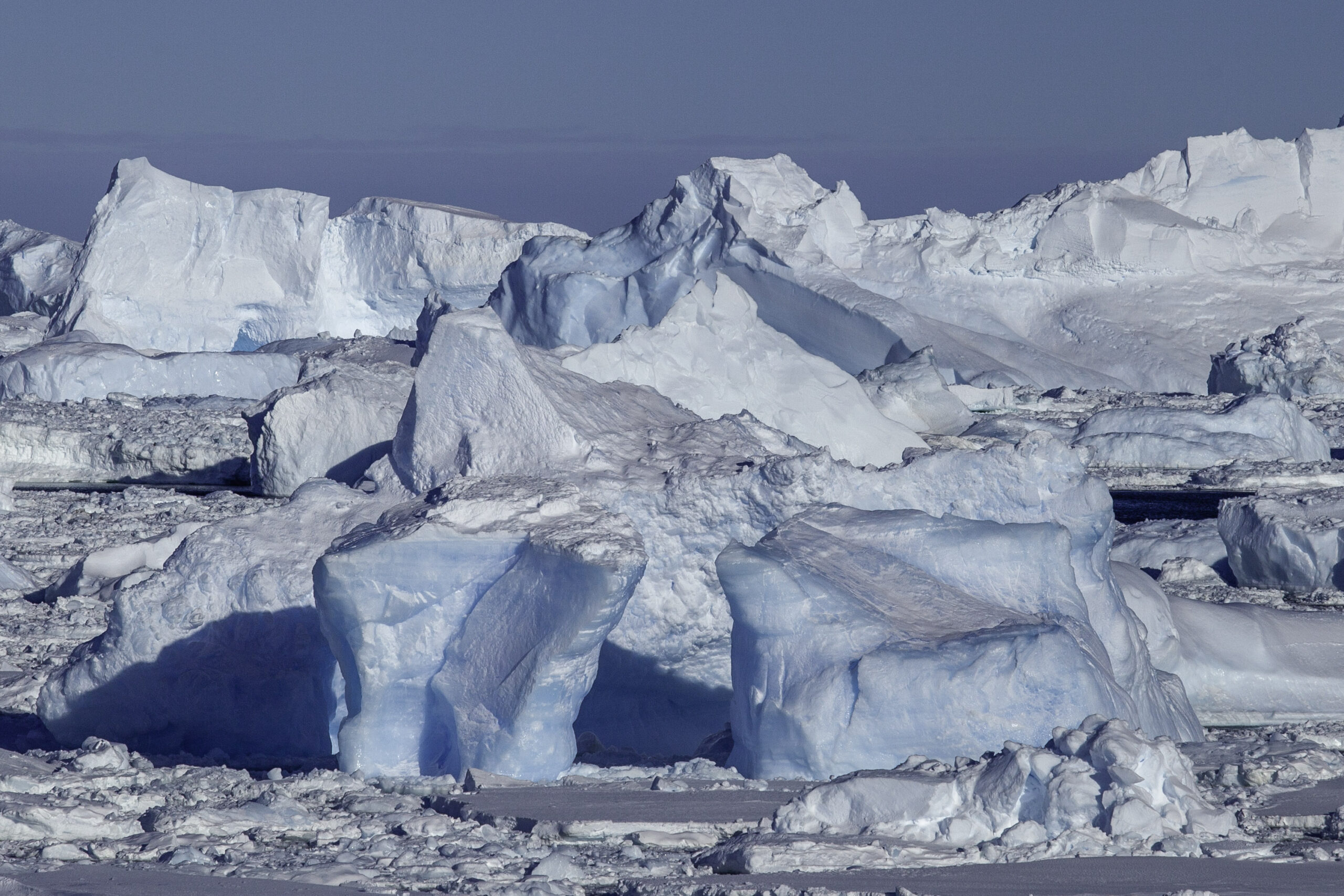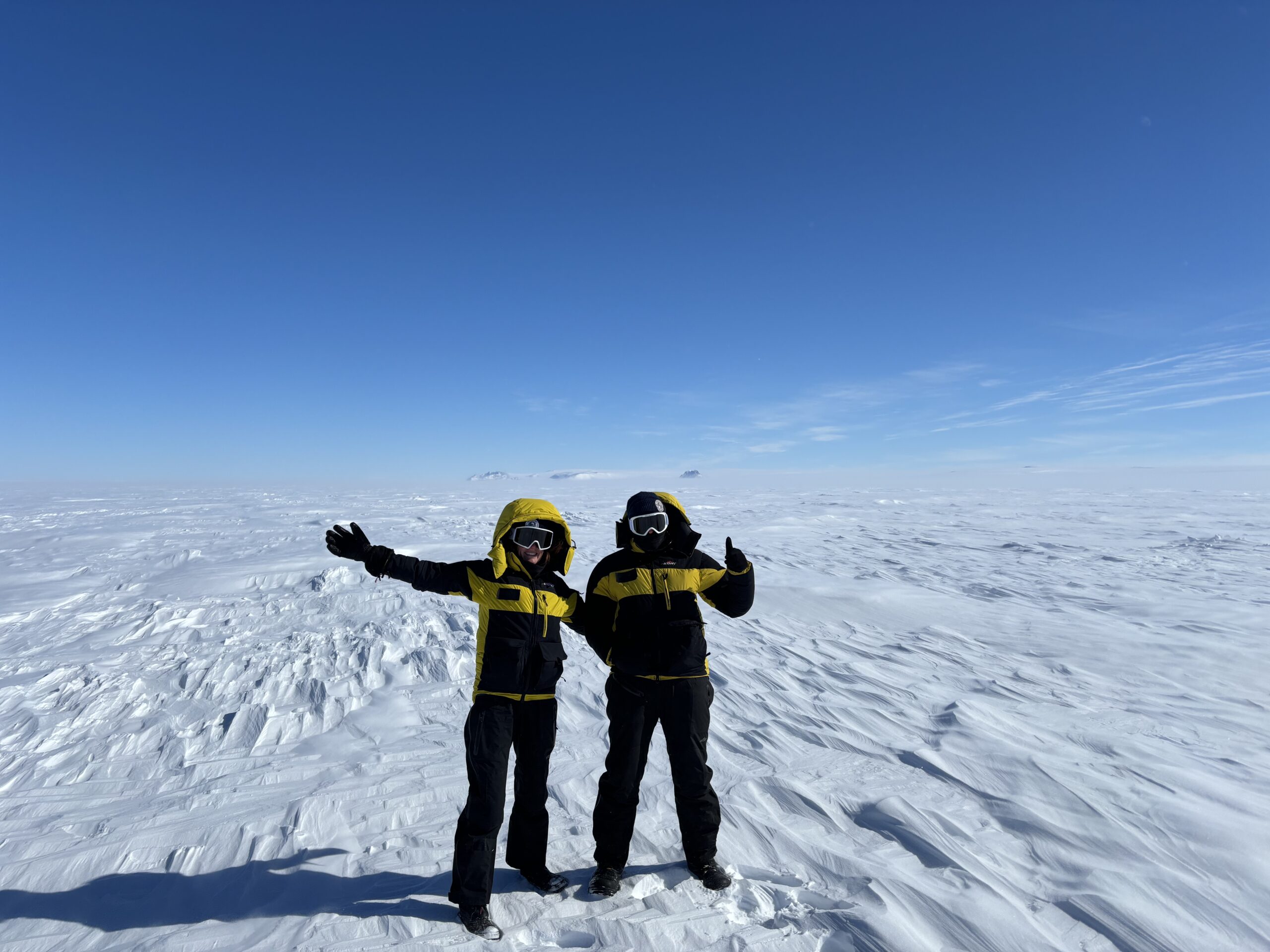Now is not the time to put funding on ice – Australian Antarctic field programs should be ambitious as the rule not the exception, writes Matt King.
*The following is an opinion piece by ACEAS Director Professor Matt King, published first in the Mercury newspaper on Thursday 3 July, 2025

—
When Australia’s new icebreaker, RSV Nuyina, sailed up the River Derwent in early May it marked the end of a triumphant inaugural research voyage. During its 70 days away, the ocean in front of the mighty Denman Glacier went from one of the most poorly observed places on Earth to something we finally could begin to understand.
Undertaking ambitious science in remote and hostile locations in Australian Antarctic Territory shouldn’t be an exception, it should be the rule. Unfortunately, it has become the exception.
The end of life of Australia’s former icebreaker, followed by delays in the commissioning of Nuyina, meant this was the first major scientific icebreaker voyage in more than a decade.
This created a backlog – a gap in our knowledge – exacerbated by the constant flow of surprises out of the Antarctic: dramatic sea-ice reduction, a massive slowdown in ocean circulation, 30C heatwaves, and a collapsed ice shelf to name a few.
A lack of ambition is the same as saying we can delay knowing how sea-ice melt will affect our rainfall or how quickly sea-level rise will change our coasts.
The Denman Glacier has its own mysteries. Nearly as tall as three kunanyi/Mt Wellingtons stacked on top of each other, it has retreated 5km in recent decades. This suggests something is up, with warm ocean water melting the glacier’s front a prime suspect. But this is a region of Earth that no one has ever been to. Nor had ever been.
In a remarkable voyage, Nuyina sailed into regions that everyone expected to be nearly impossible to reach. Last year, Germany’s icebreaker failed to do exactly that. But thanks to an unusual absence of sea ice and its remarkable capabilities, Nuyina navigated straight to the towering glacier.
There, our researchers collected data on ocean temperature and salinity, mapped pathways for warm water to flow along the sea floor, sampled ocean chemistry to understand marine organisms and associated carbon capture, and cored the sea floor to quantify past glacier behaviour.
We should celebrate all the scientists achieved.
Two things are needed to continue leading science as vital as this – the logistical platforms and the people to plan and go into the field. Both are very much uncertain.
Like the shrinking glacier, Nuyina’s future is unclear, and hinges on the government making the budget available for it to do this kind of ambitious science.
The Denman voyage was enabled by funding for an additional 60 days of marine science for just two years. From early 2026, the funding reverts to its baseline – too short for all but the briefest research voyages once the resupply of our stations is necessarily prioritised.
It has been clear from the day Nuyina was envisaged that Australia will need to free up this world-leading science icebreaker from these resupply duties by pairing it with an ice-strengthened cargo ship. We now need to bite that bullet.
But ship time is not enough.
Science ships need scientists, and their jobs too often depend on short-term funding.
Short-term grants to Australian universities add up to less than $20m per year but support more than 80 per cent of Australia’s Antarctic research output.
The three big university-based research programs, known as centres, that carried out the bulk of the science on the Denman voyage are all due to end this decade, one next year. All but three of the 63 researchers on board Nuyina were supported by these centres.
Dozens of early career researchers have now been trained to work in Antarctica, ready for the next voyage. But, because of terminating funding, many of those just starting their careers are now looking for jobs overseas or exploring alternative employment.
Samples and data from Denman Glacier will sit on the shelf because, by mid next year, the University of Tasmania-led Australian Centre for Excellence in Antarctic Science (ACEAS) will be no more. ACEAS supported more than half the researchers on Nuyina. There is no plan to replace or renew it. As a result, a dozen of our researchers have already left for secure employment, possibly for good.
What is required is a co-ordinated national approach to university funding that recognises the major role they play in Australian Antarctic research. It needs to be sustained. It must enable ambitious Australian Antarctic science. And it needs to be resolved this year before any more of our top researchers leave.
Multiple government inquiries have made exactly this point, the most recent, initiated and chaired by federal Labor, just in February. The government’s response is still pending, and its decision will have local, national, and global ramifications.
The global context is particularly relevant right now. The US Antarctic program is declining from its once dominant position, with more cuts by the day.
Now is the time for Australia to step up to, not back from, ambitious Antarctic science.
—
Professor Matt King is director of the Australian Centre for Excellence in Antarctic Science (ACEAS), centred at the University of Tasmania.


